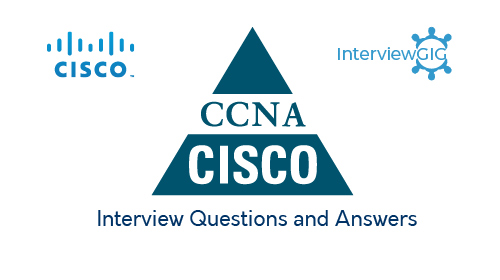What is OSPF?
OSPF stands for Open Shortest Path First. It is a link state routing Protocol. It uses shortened path first algorithm in order to build and calculate the shortest path to all known destinations. It is an Interior Gateway Protocol (IGP) that is used mainly in larger TCP/IP internetworks and within autonomous systems of the Internet (Network: source to destination using its own shortest path).
What is OSPFv3?
OSPFv3 is a link-state routing protocol for IPv6 as its predecessor OSPFv2 in IPv4.OSPFv3 still uses the autonomous areas to separate networks into areas.OSPFv3 uses an IPv6 multicast address range of FF02::5 for OSPF routes and FF02::6 for OSPF designated routers when sending updates and acknowledgments.
What are the most important features of OSPF?
- It is fast convergence and scalability
- OSPF has no hop count limit
- It provides routing information to the Internet protocol of the TCP/IP protocol suite (most used alternative to RIP protocol)
- It supports VLSM, CICR Supernetting, and Non Contiguous network segments.
- It supports the logical grouping of network segments into areas.
- It can load balancer network traffic different multiple paths of the same metric value and less bandwidth.
- The uses multicast addresses 224.0.0.5 and 224.0.0.6 for routing updates.
What is Hop count?
Hop count is the number of intermediate networks devices such as router through which a given data must pass between source and destination. Administrative count is the choosing best path to destination router.
Different routing protocol their ADs are
Directly connected –o
Static route-1
Internal EIGRP-90
OSPF-110
RIP-120
External EIGRP-170
Unknown-255
What multicast address does OSPF use?
OSPF use the multicast address of 224.0.0.5 & 224.0.0.6.
How to generate default route in OSPF?
There are two ways to inject a default route into a normal area. If the ASBR already has the default route in its routing table, you can advertise the existing 0.0.0.0/0 into the OSPF domain with the default-information originate router configuration command
What is OSPF Router ID?
Router id is 32 bit number similar to IP address. It is elected as highest IP Address of Loopback interfaces or Highest IP of the active physical interfaces if loopback is not present. It can also be set manually but it will take effect when OSPF process is reset completely or device is reloaded. There should be only one router-id per device running OSPF to avoid database issues.
What is Routing Protocol?
A routing protocol can be analyzed as a process. A protocol is formalized through the Request for Comments (RFC) process. This process involves open written commentary on a proposed technology in an effort to bring about standardization of that technology. An example of a routing protocol standard would be OSPF as defined in RFC 2328.
What is RIP?
RIP stands for Routing Information Protocol).It is one of a family of IP Routing protocols, and is an Interior Gateway Protocol (IGP) designed to distribute routing information within an Autonomous System (AS).
What is EIGRP?
EIGRP stands for Enhanced Interior Gateway Routing Protocol. It is a Cisco proprietary enhanced Distance Vector routing protocol. EIGRP is based on IGRP, hence the configuration is similar. Enhanced Interior Gateway Routing Protocol (EIGRP) is considered as a Hybrid Routing Protocol because EIGRP has characteristics of both Distance Vector and Link State Routing Protocols.
What is Linked state protocol?
Link state protocols is also known as shortest routing protocols or Shortest path first alogrithoms.Link State routing protocols do not view networks in terms of adjacent routers and hop counts, but they build a comprehensive view of the overall network which fully describes the all possible routes along with their costs. Link state protocols are based on Shortest Path First (SPF) algorithm to find the best path to a destination. Shortest Path First (SPF) algorithm is also known as Dijkstra algorithm.
What are the OSPF Packet Types?
OSPF uses five packet types in exchanging messages about up to date routing information to maintain accurate information about the network with neighbours.
- Hello Packet
- DBD or DDP Packet (Database Description Packets)
- LSR Packet (Link State Request)
- LSU Packet (Link State Update)
- LSAck Packet (Link state Acknowledgement)
What is Hello Packet in OSPF?
Hello packets are OSPF packet Type 1. These packets are multicast periodically to 224.0.0.5 multicast address on all interfaces (unicast on virtual-links) enabling dynamic discovery of neighbors and maintain neighbor relationships. On broadcast and NBMA networks, Hello packets are used to elect DR and BDR.
What is LSA in OSPF?
LSA stands for Link State Advertisement. It is a message that communicates the routers local routing topology to all other local routers in same OSPF area. Its depends on router and sequence number.
What is LSDB in OSPF?
LSDB stands for Link State Database. LSDB is the database that OSPF builds and is based on the information that it has found in LSAs (Link State Advertisements). The LSDB is synchronized between routers within the same area. Each router stores the received LSA packets in the link-state database (LSDB). After LSDBs are synced between the routers, OSPF uses the shortest path first (SPF) algorithm to calculate the best routes.
What is DBD in OSPF?
DBD stands for Database Description Packets (also referred as DDPs).It is used to check if the database is synchronized between the sending and the receiving router. These packets are exchanged when an adjacency is being initialized. They describe the contents of the topological database. It does not include full LSAs but would include LSA headers in the link-state database of the sender.
What is LSR in OSPF?
LSR stands for Link State Request. After exchanging Database Description packets with a neighbouring router, a router may find that parts of its topological database are out of date. The Link State Request packet is used to request the pieces of the neighbour’s database that are more up to date. The sending of Link State Request packets is the last step in bringing up an adjacency What other have (DBDs) – What I have (LADB) = What I need to order (LSR)
What is LSU in OSPF?
LSU stands for Link State Update. A packet that contains fully detailed LSAs typically sent in response to an LSR message. Or (LSU packets are used to reply to LSRs and also to announce new information’s or changes to the current topology)
What is LSAck in OSPF?
LSAck stands for Link state Acknowledgement. It is send by the receiving router to confirm receipt of an LSU message.
What are the OSPF neighbour states?
Before establishing a neighbor relationship, OSPF routers need to go through several state changes. These states are explained below.
Init state: A router has received a Hello message from the other OSFP router
2-way state: The neighbour has received the Hello message and replied with a Hello message of his own
Exstart state: It is beginning of the LSDB exchange between both routers. Routers are starting to exchange link state information.
Exchange state: DBD packets are exchanged. DBDs contain LSAs headers. Routers will use this information to see what LSAs need to be exchanged.
Loading state: one neighbor sends LSRs (Link State Requests) for every network it doesn’t know about. The other neighbor replies with the LSUs (Link State Updates) which contain information about requested networks. After all the requested information have been received, other neighbor goes through the same process
Full state: The Both routers have the synchronized database and are fully adjacent with each other.
What is the multicast IPs used by OSPF? What multicast IP does DR/BDR router and non-DR use?
OSPF Routers use 224.0.0.5 multicast IP address. However, in DR/BDR it uses 224.0.0.5 and 224.0.0.6. DR/BDR will use 224.0.0.6 while replying to OSPF routers in Broadcast Multi access network.
What are the different LSA types in OSPF?
- LSA Type 1-Router
- LSA Type 2-Network
- LSA Type 3-Summary
- LSA Type 4-Summary ASBR
- LSA Type 5-Autonomous system external
- LSA Type 6-Multicast OSPF
- LSA Type 7-Not-so-stubby area
- LSA Type 8-External attributes LSA for BGP
- LSA Type 9, 10, 11 -Opaque LSAs for future purpose
What are the OSRF tables?
There are three types of OSRF tables
Neighbor table: It stores information about OSPF neighbors
Topology table: It stores the topology structure of a network
Routing table: The best route for each known network
What are the OSPF Router Types?
There are four router types used in OSPF.
- IR-Internal Router
- ABR-Area Border Router
- ASBR-Autonomous System Backbone Router
- BR-Backbone Router
What is internal router in OSPF?
Routing devices that connect to only one OSPF area are called Internal Routers. All interfaces on internal routers are directly connected to networks within a single area. Routers with only interfaces in the backbone area also belong to this category and have a single link-state database.
What is ABR in OSPF?
ABR stands for Area Border Router. This router that has directly connected networks belonging to multiple areas. ABRs have multiple link-state databases, one for each area, including the backbone. ABRs are attached to multiple OSPF areas, so there can be multiple ABRs within a network.
What is ASBR in OSPF?
ASBR stand for Autonomous System Backbone Router .ASBRs are connected to more than one AS and exchange routing information with routers in another AS. ASBRs advertise the exchanged external routing information throughout their AS. Every router within an AS knows how to get to each ASBR with its AS.
What is BR in OSPF?
BR stands for Backbone Router. Routers whose interfaces connect them only to the backbone area are considered backbone routers (BRs). BRs do not have an interface to the other OSPF areas, because if they did, they would be considered ABRs.
What is OSPF super backbone area?
The idea is that this super backbone can override the default behaviour of OSPF and provide connectivity between customers without the need for crazy virtual-links or tunnelling (can’t use VLS across area 0 anyway).
What problems can cause OSPF neighborship in down state?
Steps in forming neighborship in OSPF are almost similar to EIGRP’s. Two ospf devices should be connected back to back with cables connected on correct interfaces. IP and mask should be correct. Then run the ospf process if not run already and advertise the interface segments on both routers.
Hello, Dead timers and MTU size should be same at both ends. There should not be any access-list or transparent firewall blocking the OSPF Packets or IP addresses. Neighborship should establish now. Area number and authentication parameter.
What are the OSPF Time intervals?
Hello interval: how often OSPF router will send the hello packet to other OSPF
Dead interval: how long a router will wait for hello packets before it declares the neighbour dead, Router
What is the default hello interval?
The default Hello Interval for OSPF is 10 seconds.
What is the default dead interval?
By default it is 40 seconds.
What is Process id?
Process id is used similarly to Autonomous system but it has local significance only. It can be different on neighbors running OSPF.
What is the concept of auto-cost in OSPF?
The default reference bandwidth for OSPF is 10^8 bps or 100Mbit. Increasing the reference-bandwidth allows a more granular OSPF design. If changed it should be changed on all routers in the OSPF domain. The reason you would change the reference-bandwidth is that you may have link faster than 100M in your network. If you have Gigabit networks but are using the default reference-bandwidth, then Gigabit links are equal in cost to fast Ethernet.
device# configure
device(config)# router ospf
device(config-ospf-router)# auto-cost reference-bandwidth 500





